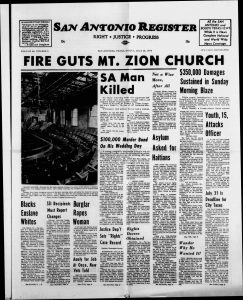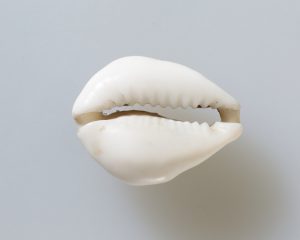Many people know of the Mexican holiday Día de Los Muertos, which is filled with vibrant colors and intricately painted faces. What many people don’t know is that this holiday originated over 3000 years ago with the Aztec empire. The Spanish Conquistadors first recorded a Día de Los Muertos celebration during the 16th century. When the Aztecs had begun this tradition, they weren’t remembering loved ones who passed, but they were worshiping the queen of the underworld and protector of the dead.1

This Aztec queen was Mictecacihuatl, “Lady of the Dead,” Queen of Mictlan.2 According to Aztec legend, Mictecacihuatl was sacrificed as an infant and placed in the underworld to become the wife of Miclantecuhtl, the king of the underworld. In the underworld, her role was to watch over the bones of past lives, which would be used to create new life in the living world. However, in order for the bones to be able to create new life, they needed to be stolen from Mictecacihuatl to be brought to the living world. As their protector, part of her own life would be carried with the stolen bones. Even after the bones were stolen, she would continue her duty to protect them by returning to the living world every year to make sure the bones were being properly taken care of. When the time came for her to return to the living world, the Aztecs celebrated Mictecacihuatl’s return with death festivals and traditional dances, to honor her for her protection of the bones that created life and to seek protection for those who died.3

The Aztecs celebrated Día de Los Muertos much differently than it is celebrated today due to the Spanish conquistadors and Catholicism. The Spanish changed the lives of the indigenous peoples wherever they went, from taking land for the Spanish throne to converting people to Catholicism. Many traditions changed, including those of Día de Los Muertos.4 The Aztecs laid out offerings for the King and Queen of the Underworld for the whole month of August, and the Spanish were the first outsiders to witness this honoring of Mictecacihuatl by the Aztecs. Not long after the Spanish exposure to this festival, the Spanish combined the Aztec tradition with Catholicism. Syncretism, the blending of Spanish and indigenous beliefs and practices, combined the Aztec traditions of Día de Los Muertos with the Spanish traditions of All Saint’s Day and All Souls Day.5 Some examples of syncretism between Catholicism and Día de Los Muertos are the symbols that are most recognizable with Día de Muertos, such as decorated skulls and skeletons, and the Spanish character “La Catrina,” who represents Mictecacihuatl.6 The merging of Catholicism with the Aztec religious beliefs began the evolution of how Día de Los Muertos, transforming how it is celebrated today.

Despite that the name Día de Los Muertos translates to Day of the Dead in English, the holiday is actually the celebration of life. Día de Los Muertos doesn’t focus on death and mourning of a loved one. It’s seen as a happy celebration where family members of all generations, deceased and alive, can be together as one. The traditions of this holiday have changed from honoring the queen of the underworld Mictecacihuatl to honoring those who have passed.7 It’s a time of colorful festivals and parades, beautifully painted colorful skulls, marigold flowers, decorated ofrendas, grave site visits and the smells of traditional Mexican foods and incense in the air. Although it is primarily celebrated in Mexico, some parts of the United States, especially cities and towns on the Mexican border, have adopted the tradition and celebrate the remembrance of their deceased loved ones.
- MasterFILE Complete, 2008, s.v. “Día de los Muertos, by Benjamin Perea. ↵
- Sin Jones, Mictecacihuatl, Santa Muerte, 2010, 1-16. ↵
- Sin Jones, Mictecacihuatl, Santa Muerte, 2010, 1-16. ↵
- Mark Lacy, Origins of El Día de Los Muertos: The Prehispanic Festival of the Dead Defies Cultural Invasions of Mexico, (History Institute for Culture), 1. ↵
- Mark Lacy, Origins of El Día de Los Muertos: The Prehispanic Festival of the Dead Defies Cultural Invasions of Mexico, (History Institute for Culture), 1. ↵
- Mark Lacy, Origins of El Día de Los Muertos: The Prehispanic Festival of the Dead Defies Cultural Invasions of Mexico, (History Institute for Culture), 1. ↵
- Christina Zarate, Día de Los Muertos, (Smithsonian National Museum of American History), 2-7. ↵



114 comments
Pedro Gonzalez Aboyte
Dia de Los Muertos is a celebration that I have always heard about and even participated in. All this time, I thought it was a celebration of those who had died but were still with us in spirit. I never knew the origins of this tradition until I read this article. It does an excellent job of giving us the origin and how it was transformed into the tradition we know of today. It has been going on for a long time, and it is amazing how much impact it has on the communities that celebrate it. It brings life and happiness into a topic that is usually seen as sad and unwanted.
Mariah Garcia
As a latinX women, a citizen of San Antonio, and someone who desires to be closer to her culture, Dia De Los Muertos has always been a source of fascination for me. With movies like Coco and Book of Life in pop culture, as well as the plethora of information available to us, it is always something that we cannot learn too much about. I loved this article, and truly found it enlightening and knowledgeable.
Tyanne Pearcy
This article was very inciteful and interesting. Living in Texas I’ve heard of Día De Los Muertos but never got this much information of what this holiday was truly about. This tradition goes way back and I was surprised that the Aztecs was the first to celebrate this holiday. It is a refreshing way to say goodbye to loved ones, instead of focusing on death its celebrating life. The amazing colors, parades and festivities bring this holiday to life.
Jennifer Salas
This article was so interesting and informative! I grew up celebrating Dia De Los Muertos, but I never really knew the origins of it. I was surprised at how long this has been going on, and how much it has evolved since then. I’m glad that this something we still celebrate today, and that the culture was able to keep this going. It makes me happy that instead of being upset about someones death you choose to celebrate their life.
Madison Downing
It’s amazing how even though certain civilizations are long gone their culture is still with us. Even though it is different now I find it so fascinating that the Spanish conquistadors found the need to incorporate the celebrations into their own religion. For a long time I personally always thought that Día De Los Muertos was always in the Spanish traditions but it wasn’t until they got to the Mexico area. It’s also quite interesting how the goddess the Aztecs worshipped use to be a normal human who was sacrificed, I didn’t think that was around because it wasn’t common (minus the Greeks and their Demi-gods). This was a very cute article and I enjoyed the pictures and information!
Alyssa Garza
This article was very interesting to read since I didn’t know that Día de Los Muertos was combination with the Aztecs. They both celebrate it for different reasons, but I liked how it was mixed between two different cultures. I always love when Día de Los Muertos comes around because there’s always color everywhere, and we celebrate our love one’s lives and how they lived.
Avery Looney
This article is very well written and researched, it is also a very captivating read. It does a great job of comparing the Día de Los Muertos with how the Aztecs practiced the holiday over 3,000 years ago to now. The biggest difference in the holidays is that the Aztec’s worshiped Mictecacihuatl, “The Lady of the Dead”, who ruled the underworld and now the holiday is meant to honor passed loved ones.
Montserrat Moreno Ramirez
I’ve never heard of the origins of this tradition, of course it has changed a lot since those aztec old days. Now n Mexico this celebration takes place the 1st and 2nd of November were people usually make an offering to the dead, mainly with the things or dishes they enjoyed the most when they were alive. Really interesting article, enjoyed reading it!
Daniela Duran
I really enjoyed reading this article! It was clear and very detailed! I had no idea that this tradition traces its way back to the Aztecs, and it was certainly interesting to read about how the Spanish people adapted the Aztec belief, into their own. I liked how the catholic views of the Spaniards were merged with something completely different to their beliefs, because it shows a great cultural exchange. The idea of the queen of the underworld guarding the bones of life was also really interesting to read about!
Alexandra Lopez
Reading this article has informed the origins of Día de Los Muertos and how much it has changed because of Spaniard/Catholic influence. This article is well written and enlightening about Día de Los Muertos that is celebrated all over Mexico/some parts of the United States. I am glad I read this because my knowledge about Día de Los Muertos only extends to the Disney movie “Coco.”